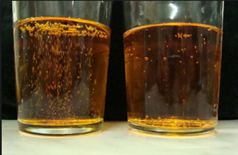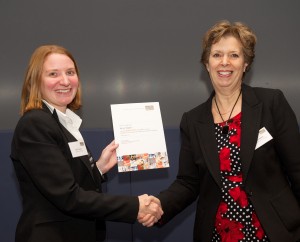By Meg Fluhart, @MegEliz_
This blog originally appeared on the Mental Elf blog on 24th October 2014
A recent report from the Faculty of Addictions at the Royal College of Psychiatrists has highlighted the changing face of drug abuse in the UK.
While drug abuse was previously dominated by crack, heroin, and ecstasy, an increasing number of people are being admitted to treatment for harm related to club drugs and novel psychoactive substances.
Club drugs are:
Psychoactive substances that are recreationally used in nightclubs, bars, festivals, music events, circuit and house parties.
Novel Psychoactive Substances (NPS) are synthesised to mimic traditional drugs and are marketed “not for human consumption” to avoid detection. They are sold under the guise of bath salts or other chemicals (Royal College of Psychiatrists, 2014).

Current problems
Serious harm
- There is increasing evidence of risks and long-term effects of these drugs. For example:
- GHB has a very small degree of dosing between euphoria and one resulting in coma or death (Club Drug Clinic, 2013)
- Long term methamphetamine use may result in psychotic states
- Ketamine can cause kidney and bladder problems
- Mephedrone use can result in heart problems
New users, more drugs
- Each year 1 million adults are estimated to use club drugs per year in the UK (National Treatment Agency for Substance Misuse, 2012), and this population of users has not just switched from crack and heroin but has emerged from a diverse population of students, ‘clubbers’ and LGBT communities
- Additionally, the number of available drugs is growing, with a new NPS per week becoming available in Europe via the internet outlets (European Monitoring Centre for Drugs and Drug Addiction, 2012)
Unprepared services
- Club drug and NPS users tend to not perceive current drug services as for them and are therefore more likely to receive treatment in alternative care facilities such as sexual or mental health clinics (National Treatment Agency for Substance Misuse, 2012)
- Staff in these non-specialists centres have reported feeling unconfident in club drug and NPS assessment, intervention, and referrals
- Furthermore, even specialist services have historically focused on crack and heroin related harm reduction and need further guidance and training to provide support to individuals with these emerging drug problems

Possible solutions
Widen the front door
- Services need to encourage individuals to engage and seek treatment for club drugs and NPS-related problems, by understanding the population and drug specific problems they may come encounter with (e.g. gay men using mephedrone for sexual enhancement)
Support the front line
- Information and clinical networks can be established in order to share information, develop knowledge, and keep on top of the rapidly emerging new drugs
‘Connect’ the front line
- As club drug/NPS users are more apt to wind up in non-specialist treatment, it would be beneficial to integrate all different health centres into a clinical network. This would allow specialised centres to support non-specialist centres, as well as gather information across all different bases
Watch all horizons for harm
- As many club drugs and novel psychoactive substances are new, little is known about the possible short and long term effects. Therefore healthcare centres from a range of clinical areas should be monitoring and recording club drug/NPS incidences (e.g. emergency/acute care, primary care, sexual health, and mental health services)
Promote research into club drugs and novel psychoactive substances
- With the increase of new drugs on the market, funders should consider prioritising resources towards club drugs and novel psychoactive substances
- Due the diverse population of users and context of club drugs, we cannot assume the same interventions that are established with crack and heroin will work with these drugs. Therefore, future research proposals should consider club drug/NPS treatment interventions
Empower users through education
- A main priority should be to provide the public with high quality and comprehensive information on the risks of club drugs and novel psychoactive substances in order to prevent initiation
- In addition, information on harm reduction must be provided, including advice on safe injection, warnings on increased sexual health risks when using, and material on support and recovery

Summary
This faculty report has brought to attention the rising problem of club drugs and novel psychoactive substances in the UK, which are popular amongst students, clubbers, and the LGBT community.
The large number of users (estimated at 1 million people per year) has subsequently resulted in new drugs becoming rapidly available via online markets (National Treatment Agency for Substance Misuse, 2012; European Monitoring Centre for Drugs and Drug Addiction, 2012).
The report authors highlight several key points:
- Users of club drugs and novel psychoactive substances are likely to seek alternative treatment to traditional drug specialist centres. Therefore, it is important to train and educate staff in these non-specialist centres so they can confidently provide support and referrals to users
- All healthcare centres should work together to monitor and share information on club drug/NPS cases in order to monitor the possible side effects of these rapidly emerging new drugs
- Funding bodies should consider shifting the attention from traditional drug use (crack/heroin) to club drugs to determine whether different treatment interventions are needed

Links
One new drug a week: Why novel psychoactive substances and club drugs need a different response from UK treatment providers (PDF). Royal College of Psychiatrists, 2 Sep 2014.
Club Drugs: Emerging Trends and Risks (PDF). National Treatment Agency for Substance Misuse, 2012.
Annual Report 2012 on the State of the Drugs Problem in Europe. European Monitoring Centre for Drugs and Drug Addiction, 2012.
GHB/GBL. Club Drug Clinic, 2013.
– See more at: http://www.thementalelf.net/mental-health-conditions/substance-misuse/one-new-drug-a-week-club-drugs-and-novel-psychoactive-substances/#sthash.LrMnqRPK.dpuf

























